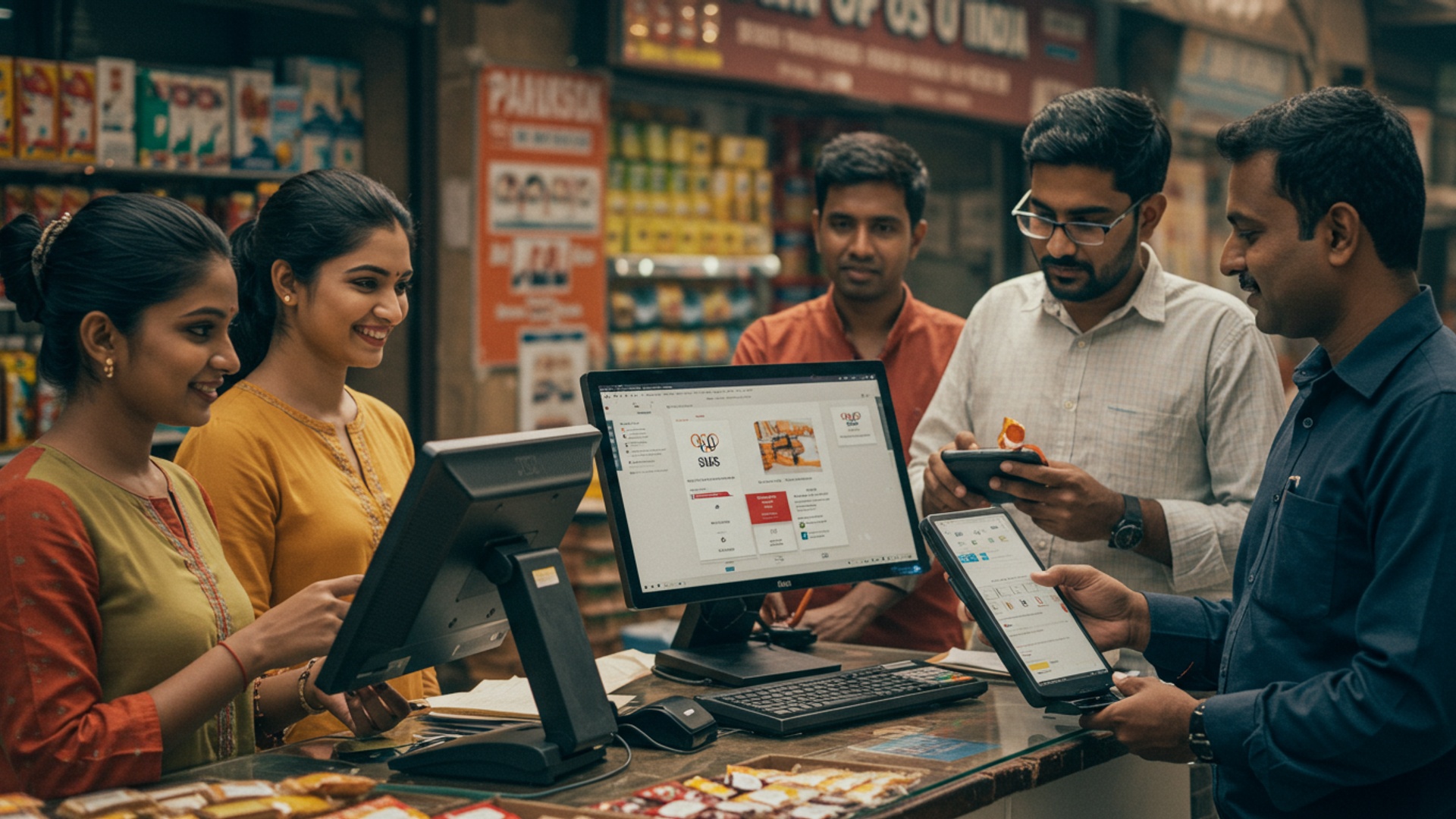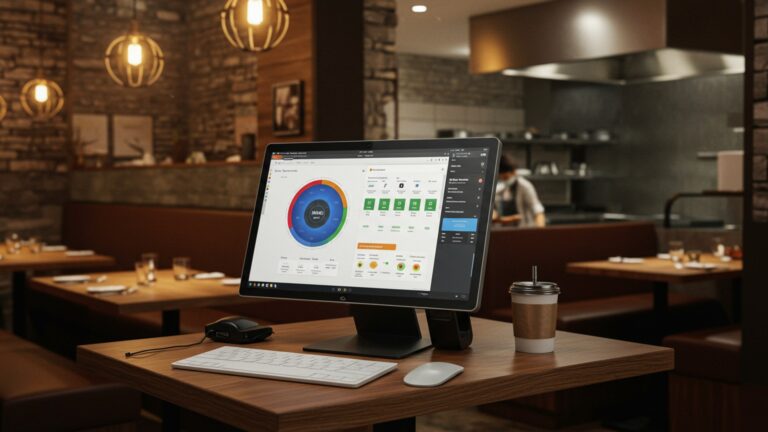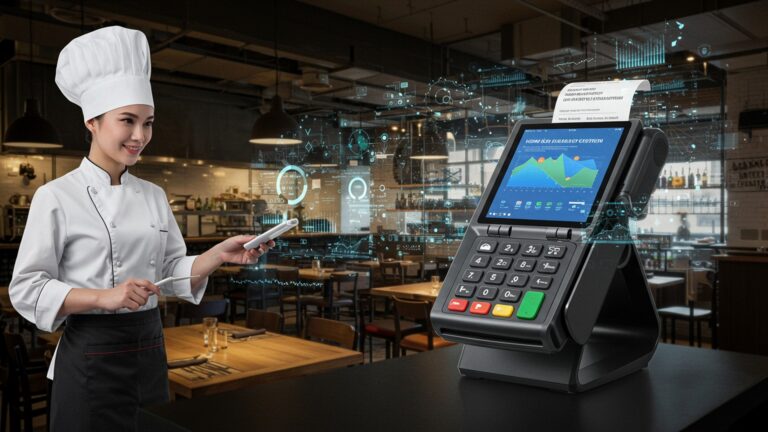Learn How to Select the Best POS Software in India for Success
The dynamic Indian retail and hospitality sectors demand more than just transactional processing; they require strategic operational hubs. In an era where digital payments, cloud infrastructure. customer loyalty programs are paramount, selecting the ideal point-of-sale system is a pivotal decision for sustained growth. Businesses, from burgeoning D2C brands to established multi-outlet chains, increasingly leverage POS capabilities for real-time inventory management, data-driven sales insights. enhanced customer experiences. Navigating the diverse landscape of features, integrations. deployment models to pinpoint the best POS software in India is therefore not merely a technical task. a strategic imperative that directly influences efficiency, profitability. market competitiveness in today’s fast-paced economy.

Understanding POS Software: The Backbone of Modern Retail
In today’s fast-paced business environment, a Point of Sale (POS) system is far more than just a cash register. It’s the central nervous system of a retail or hospitality operation, managing everything from sales transactions to inventory and customer data. For businesses across India, embracing a robust POS solution is no longer an option but a necessity for competitive edge and streamlined operations. Understanding its core components is the first step towards identifying the best POS software in India for your specific needs.
At its heart, a POS system facilitates sales transactions. When a customer makes a purchase, the POS software calculates the amount, processes the payment. records the sale. But, modern POS systems extend far beyond this basic function. They integrate various business processes, offering a holistic view of your operations. This technological evolution from simple cash drawers to sophisticated software platforms has transformed how Indian businesses manage their daily activities, driving efficiency and improving customer experience.
Key components typically include:
- POS Software
- POS Hardware
- Payment Processing
- Network Connectivity
The brain of the system, running on a computer, tablet, or smartphone.
This can include a cash drawer, receipt printer, barcode scanner, card reader (for debit/credit cards, UPI payments). a display screen for the customer.
Integration with payment gateways to accept various forms of payment, crucial in India’s diverse payment landscape.
Often cloud-based, requiring internet access, though some offer offline capabilities.
The synergy between these components ensures that every transaction is recorded, inventory is updated in real-time. valuable sales data is captured. This foundational understanding is crucial as we delve deeper into selecting the ideal solution.
Key Features to Look for in the Best POS Software in India
When evaluating potential POS solutions, a feature-rich system can make a significant difference in your operational efficiency and profitability. The best POS software in India will offer a comprehensive suite of functionalities tailored to diverse business requirements. Here’s a breakdown of essential features:
- Sales Management
- Intuitive Billing Interface
- Discounts & Promotions
- Returns & Exchanges
- Multiple Payment Options
- Inventory Management
- Real-time Stock Tracking
- Automated Reorder Points
- Variant Management
- Multi-location Inventory
- Customer Relationship Management (CRM)
- Customer Database
- Loyalty Programs
- Personalized Marketing
- Employee Management
- User Permissions
- Time Tracking
- Performance Tracking
- Reporting & Analytics
- Sales Reports
- Profit & Loss Statements
- Inventory Reports
- Customizable Reports
- Integrations
- Accounting Software
- E-commerce Platforms
- Third-party Payment Gateways
- Offline Mode Capability
- Multi-store Management
Easy-to-use for quick checkouts, reducing customer wait times.
Ability to apply various discounts (percentage, fixed amount), create bundles. manage loyalty points effortlessly.
Streamlined process for handling customer returns and exchanges, including partial returns.
Support for cash, credit/debit cards, UPI, mobile wallets. gift cards – essential for the Indian market.
Know exactly what’s in stock, preventing overselling or stockouts.
Set thresholds to automatically generate purchase orders when stock runs low.
Handle products with multiple sizes, colors, or other attributes.
Manage stock across different stores or warehouses from a single dashboard.
Store customer insights, purchase history. contact details.
Implement points-based or tiered loyalty programs to reward repeat customers.
Use customer data to send targeted promotions and communications.
Assign different access levels to staff based on their roles.
Monitor employee work hours and calculate wages.
Track individual sales performance and commission calculations.
Daily, weekly, monthly. yearly sales trends, top-selling products. peak hours.
grasp your financial health.
Stock movement, dead stock. inventory valuation.
Generate reports tailored to specific business needs.
Seamless integration with platforms like Tally, Zoho Books, or QuickBooks to automate financial entries.
Sync inventory and sales with your online store (e. g. , Shopify, WooCommerce).
Connect with preferred payment providers for secure transactions.
Crucial for areas with unreliable internet connectivity, allowing operations to continue seamlessly.
For growing businesses, the ability to manage multiple outlets from a central system is invaluable.
Consider a retail chain expanding from Bangalore to Chennai; a POS system with robust multi-store management and cloud sync becomes paramount to maintain consistency and oversight across all locations. Identifying which of these features are “must-haves” versus “nice-to-haves” based on your operational model will guide you towards the most suitable choice.
Cloud-Based vs. On-Premise POS: A Critical Choice
One of the fundamental decisions you’ll face when seeking the best POS software in India is whether to opt for a cloud-based or an on-premise solution. Each model offers distinct advantages and disadvantages, making the choice dependent on your business size, budget, technical capabilities. operational priorities.
Cloud-Based POS
Cloud-based POS systems, also known as SaaS (Software as a Service) POS, store your data on remote servers accessible via the internet. Instead of installing software on local machines, you access the POS through a web browser or a dedicated app. This model has gained immense popularity due to its flexibility and scalability.
- Pros
- Accessibility
- Lower Upfront Costs
- Automatic Updates & Maintenance
- Scalability
- Data Security (Vendor Managed)
- Cons
- Internet Dependency
- Subscription Costs
- Data Ownership Concerns
Access your sales data, reports. manage inventory from anywhere with an internet connection. This is particularly beneficial for business owners who travel or manage multiple locations.
Typically operates on a subscription model (monthly/annual fees), eliminating large initial hardware and software licensing investments.
Software updates, security patches. data backups are handled by the vendor, reducing IT burden.
Easily scale up or down based on business needs, adding new terminals or users with minimal effort.
Reputable cloud providers invest heavily in data security, often exceeding what small businesses can afford independently.
Requires a stable internet connection for full functionality, though many offer robust offline modes for basic operations.
Ongoing fees can accumulate over time.
While you own your data, it resides on the vendor’s servers, which some businesses might find less comforting.
Consider a new cafe opening in a bustling Mumbai neighborhood. A cloud-based POS allows the owner to set up quickly with minimal upfront cost, manage orders from a tablet. monitor sales from home. If they decide to open a second branch, adding a new terminal is simple, leveraging the same cloud infrastructure.
On-Premise POS
On-premise POS systems, also known as legacy or traditional POS, involve installing the software directly onto your local servers and computers within your business premises. You purchase a license for the software. all data is stored locally.
- Pros
- Full Control
- No Internet Dependency
- One-time Licensing Fee
- Customization
- Cons
- Higher Upfront Costs
- Maintenance & IT Burden
- Limited Accessibility
- Scalability Challenges
You have complete control over your data and system, as everything is managed internally.
Operates independently of an internet connection, making it ideal for locations with poor connectivity or businesses that prioritize local data storage.
Often involves a larger initial investment but avoids recurring subscription costs (though maintenance contracts might be separate).
Can sometimes be more extensively customized to unique business workflows, especially for larger enterprises with dedicated IT teams.
Significant initial investment for hardware, software licenses, installation. setup.
You are responsible for all updates, backups, security. troubleshooting, requiring internal IT expertise or external support contracts.
Data access is typically restricted to your local network.
Expanding requires additional hardware and software licenses, which can be complex and costly.
A well-established supermarket chain in a tier-2 Indian city, which has invested heavily in its own IT infrastructure and prioritizes data sovereignty within its premises, might prefer an on-premise solution. They have the resources for maintenance and value the complete control over their extensive inventory and customer data, especially if their internet reliability isn’t guaranteed.
Here’s a comparison to help you decide:
| Feature | Cloud-Based POS | On-Premise POS |
|---|---|---|
| Data Storage | Remote Servers (Cloud) | Local Servers (On-site) |
| Cost Model | Subscription (Monthly/Annual) | One-time License + Hardware |
| Accessibility | Anywhere with Internet | Local Network Only |
| Maintenance & Updates | Vendor Managed | Client Managed |
| Internet Dependency | High (often with offline mode) | Low (operates locally) |
| Scalability | Easy & Flexible | More Complex & Costly |
| Initial Investment | Lower | Higher |
Industry-Specific Considerations: Tailoring Your POS
The “best” POS software is rarely a one-size-fits-all solution. Its effectiveness largely depends on how well it aligns with the specific operational nuances of your industry. What works for a bustling restaurant might be entirely inadequate for a fashion boutique. When searching for the best POS software in India, it’s crucial to consider industry-specific features.
- Retail (Fashion, Electronics, General Merchandise)
- Barcode Scanning
- Variant Management
- Promotions & Bundling
- Layaway & Gift Cards
- Return Merchandise Authorization (RMA)
- Example
- Restaurants & Cafes
- Table Management
- Kitchen Display System (KDS) Integration
- Menu Customization
- Order Splitting & Merging
- Online Ordering & Delivery Integration
- Waitlist Management
- Example
- Salons & Spas
- Appointment Scheduling
- Staff Commission Tracking
- Service Package Management
- Client History & Preferences
- Resource Management
- Example
- Supermarkets & Grocery Stores
- Weighing Scale Integration
- Batch & Expiry Date Tracking
- Rapid Checkout
- GST Compliance
- Planogram Management
- Example
Essential for quick and accurate product lookup and inventory management.
Handling multiple sizes, colors. styles of a single product.
Robust support for “buy one get one,” seasonal discounts. combo offers.
Management of deferred payments and store credit.
Streamlined processes for managing product returns and exchanges.
A clothing store in Delhi needs a system that can track inventory by size and color, apply complex seasonal discounts. manage customer loyalty points effectively.
Visual floor plans, table status (occupied, clean, reserved).
Orders sent directly to the kitchen, improving efficiency and reducing errors.
Easy updates for daily specials, ingredient modifications. combo meals.
Flexibility for customers to split bills or merge orders.
Connects with food aggregators like Swiggy/Zomato or proprietary online ordering systems.
For busy establishments, managing queues efficiently.
A popular cafe in Bengaluru requires a POS that integrates with a KDS, allows for easy menu updates. can handle multiple payment methods including online delivery platforms seamlessly.
Integrated calendar for booking, rescheduling. client reminders.
Automatically calculate commissions for services and product sales.
Create and sell bundles of services.
Keep detailed records of client services, preferences. product purchases.
Track availability of rooms, equipment, or specific stylists.
A high-end salon in Mumbai would benefit from a POS that manages appointment bookings, tracks individual stylist performance and commissions. maintains detailed client service histories.
Direct integration with digital weighing scales for produce.
Critical for perishable goods to minimize waste.
Designed for high-volume, quick transactions.
Automated calculation and reporting of GST on various product categories.
For larger stores, managing product placement efficiency.
A supermarket chain needs a robust system capable of handling thousands of SKUs, integrating with weighing scales. providing detailed inventory reports for batch and expiry dates.
Before committing to any solution, assess vendors for their industry-specific expertise. Many providers specialize in certain sectors, offering tailored features that generic systems lack. This specialization is often a strong indicator of the best POS software in India for your niche.
Evaluating Vendors and Pricing Models
Selecting the best POS software in India also involves a thorough evaluation of potential vendors and their pricing structures. This stage requires due diligence to ensure you’re partnering with a reliable provider and understanding the total cost of ownership (TCO).
Vendor Reputation and Support
A POS system is a long-term investment, so the vendor’s reliability and support quality are paramount. Consider the following:
- Customer Reviews and Testimonials
- Local Presence and Support
- Response Time and Channels
- Training and Onboarding
- Longevity and Updates
Look for reviews on independent platforms (e. g. , Capterra, G2, Trustpilot, or local Indian business forums). Pay attention to feedback regarding customer support, ease of use. reliability.
In India, local support can be a significant advantage. Does the vendor offer support in regional languages? Are their support hours aligned with your business hours? A provider with a strong Indian presence often understands local market nuances better, from payment methods to regulatory compliance (like GST).
Inquire about their average response times for support queries and the available support channels (phone, email, chat, knowledge base). A system outage can be catastrophic, so quick and effective support is crucial.
Does the vendor provide comprehensive training for your staff? Is it included in the package or an additional cost?
How long has the company been in business? Do they regularly release updates and new features, indicating ongoing development and commitment?
“When we first started our chain of convenience stores in Pune, we opted for a lesser-known POS provider due to lower upfront costs,” shares Rohit Sharma, owner of ‘Daily Essentials’. “While the software was okay, their customer support was almost non-existent. A critical system crash during peak hours meant we were processing manually for half a day, losing significant sales. We quickly switched to a vendor known for 24/7 support and a strong local team, which, despite being slightly more expensive, has proven invaluable for business continuity.” This anecdote highlights the critical importance of robust support.
Pricing Structures
POS pricing can be complex, often with hidden costs. It’s vital to get a clear breakdown of all potential expenses.
- Subscription Models (Cloud-based)
- Monthly/Annual Fees
- Tiered Plans
- One-time License Fees (On-premise)
- Perpetual License
- Transaction-Based Fees
- Hardware Costs
- Initial purchase of POS terminals, barcode scanners, receipt printers, cash drawers, card readers.
- Some vendors offer bundled packages, while others require you to source hardware separately.
- Hidden Costs
- Installation & Setup Fees
- Training Costs
- Support & Maintenance Contracts
- Integrations
- Customization
- Trial Periods and Demos
- Scalability of Pricing
Most common for cloud POS. Pricing often varies based on the number of terminals, users, or advanced features.
Basic, Standard, Premium plans with different feature sets. Ensure the chosen tier meets your current and future needs.
You buy the software once. beware of additional costs for future updates, upgrades. ongoing maintenance agreements.
Some providers, especially those integrated with their own payment processing, might charge a small percentage or flat fee per transaction. interpret if this is built into your payment gateway fees or an additional charge from the POS vendor.
Can include initial configuration and data migration.
For staff onboarding.
Especially for on-premise systems, these are crucial but often separate.
Fees for connecting with third-party software (e. g. , accounting, e-commerce).
If you require specific modifications.
Always utilize free trial periods or request detailed demos. This allows you to test the software’s functionality, ease of use. compatibility with your operations before making a commitment.
As your business grows, how will the costs change? Will adding more terminals or locations significantly increase your expenditure?
Always ask for a detailed quote that outlines all potential costs for at least the first 1-3 years. This holistic view helps you compare options accurately and choose the best POS software in India that aligns with your budget and growth trajectory.
Implementation and Training: Ensuring a Smooth Transition
Even the best POS software in India can fail if its implementation is botched or staff are inadequately trained. A smooth transition from your old system (or manual processes) to a new POS is critical for minimizing disruption and maximizing the return on your investment. This phase requires careful planning and execution.
Data Migration Strategy
One of the most crucial steps is migrating your existing data to the new POS system. This typically includes:
- Product Catalog
- Customer Database
- Vendor details
- Historical Sales Data
SKUs, product names, descriptions, prices, categories, variants.
Names, contact data, purchase history, loyalty points.
Supplier details.
Though not always migrated in full, understanding past performance is vital for reporting.
Work closely with your POS vendor to comprehend their data import capabilities. Many systems support importing data via spreadsheets (e. g. , CSV files). Ensure your data is clean and accurately formatted before migration to avoid errors. A common mistake businesses make is underestimating the time and effort required for data cleansing and migration.
// Example of a basic CSV structure for product import
// Product Name,SKU,Category,Price,Stock Quantity,Variant 1 Name,Variant 1 Value
// T-Shirt,TS001,Apparel,499. 00,100,Size,M
// T-Shirt,TS002,Apparel,499. 00,80,Size,L
// Coffee Mug,CM001,Homeware,199. 00,50,,
This snippet shows a simplified format for importing product data, where each row represents a distinct product or product variant. The “Variant 1 Name” and “Variant 1 Value” columns are used for items like clothing sizes or colors, which helps in managing complex inventory.
Hardware Compatibility
Verify that your new POS software is compatible with your existing hardware (if you plan to reuse any) or with the new hardware you intend to purchase. This includes:
- Operating System
- Peripherals
- Network Requirements
Does the software run on Windows, macOS, Android, or iOS?
Are your barcode scanners, receipt printers, cash drawers. card readers compatible? Many POS vendors have a list of recommended or certified hardware.
Ensure your internet speed and Wi-Fi infrastructure can support the new system, especially for cloud-based solutions.
Staff Training: The Human Element
The success of your new POS system heavily relies on your staff’s ability and willingness to use it effectively. Prioritize comprehensive training:
- User-Friendliness
- Hands-on Training
- Role-Based Training
- Training Materials
- Pilot Program
Opt for software with an intuitive interface that minimizes the learning curve.
Conduct interactive training sessions where staff can practice using the system for various scenarios (sales, returns, inventory checks).
Tailor training to different roles (cashiers, managers, inventory staff) focusing on the features relevant to their daily tasks.
Provide accessible guides, FAQs. video tutorials for ongoing reference.
Consider a phased rollout where a small group of users tests the system first, providing feedback before a full launch.
As a manager of a chain of bakeries in Chennai once remarked, “We invested in a fantastic POS. initially, our staff struggled because the training was too technical. We learned that making it fun and practical, with real-life scenarios, made all the difference. Now, they love it because it simplifies their work.”
Phased Rollout vs. Big Bang
- Phased Rollout
- Big Bang
Implement the new POS in one store or department first, gather feedback, iron out kinks. then roll it out to others. This minimizes risk and allows for adjustments.
Deploy the new system across all locations simultaneously. This can be faster but carries higher risks if unforeseen issues arise.
For most Indian businesses, especially those with multiple outlets, a phased rollout is often the safer and more manageable approach.
Post-Implementation Support
Ensure your vendor offers robust post-implementation support. This includes troubleshooting assistance, ongoing technical support. potentially refresher training sessions. A dedicated support channel for the initial weeks after launch can be invaluable.
Actionable Takeaways for Selecting Your Best POS Software in India
Navigating the vast landscape of POS solutions can be daunting. by following a structured approach, you can confidently select the best POS software in India for your enterprise. Here are actionable steps to guide your decision-making process:
- Assess Your Specific Needs
- List Your “Must-Have” Features
- Identify Your “Nice-to-Have” Features
- Determine Your Industry-Specific Needs
- Consider Your Business Size and Growth Plans
- Prioritize Cloud-Based vs. On-Premise
- Evaluate your internet reliability, budget for IT infrastructure. data control preferences. If flexibility and lower upfront costs are key, lean towards cloud. If absolute control and offline functionality are paramount, consider on-premise.
- Define Your Budget and grasp TCO
- Look beyond initial costs. Factor in subscription fees, hardware, installation, training, ongoing support. potential integration costs over a 3-5 year period. Don’t let a low upfront cost blind you to high recurring expenses.
- Research and Shortlist Vendors
- Look for vendors with a strong reputation in India. Check online reviews, industry forums. ask for recommendations from peers.
- Prioritize vendors with local support teams and knowledge of Indian business regulations (e. g. , GST compliance).
- Utilize Free Trials and Demos Extensively
- Hands-on experience is invaluable. Test the software with your actual products, customer scenarios. team members. Check for ease of use, interface intuitiveness. overall workflow.
- Prepare a checklist of your “must-have” features and ensure they function as expected during the trial.
- Inquire About Support and Training
- interpret the level of support offered (24/7, business hours), response times. available channels.
- Confirm if training is included and how it’s delivered. A well-trained team is crucial for successful adoption.
- Plan for Implementation
- Discuss data migration strategies with potential vendors. Ensure your existing data can be cleanly imported.
- Verify hardware compatibility to avoid unexpected expenses or delays.
- Ask for References
- If possible, speak to existing customers of the shortlisted POS providers, especially those in your industry or of a similar size. Their real-world experiences can provide invaluable insights.
What are the non-negotiable functionalities your business absolutely requires (e. g. , inventory management, specific payment integrations, multi-store capabilities)?
What would enhance your operations but aren’t critical from day one?
As discussed, a restaurant’s needs differ vastly from a retail store’s. Prioritize solutions with built-in features for your sector.
A solution for a single small shop might not scale effectively for a growing chain.
By meticulously following these steps, you’ll be well-equipped to make an informed decision, selecting a POS solution that not only meets your current operational demands but also supports your business’s growth and success in the dynamic Indian market.
Conclusion
Navigating the diverse Indian POS market might initially seem overwhelming. by focusing on your unique operational needs, you’ve gained the clarity to make an informed decision. Remember, the ‘best’ POS isn’t a universal solution; it’s the one that integrates seamlessly with your specific business flow, whether you run a bustling ethnic wear store needing robust inventory tracking for sarees or a modern pharmacy requiring precise prescription management. From my observations working with various businesses, a common pitfall is underestimating the importance of local support and proactive updates for Indian compliance standards like GST; prioritize vendors who truly grasp and cater to these nuances. Beyond mere features, envision scalability, especially with the rapid shift towards cloud-based solutions and integrated digital payment gateways. Your strategic choice today is more than just a software purchase; it’s a foundational investment in operational efficiency, enhanced customer experiences. sustained growth. Take that confident, informed leap; your business is poised for success with the right technology empowering it.
More Articles
Master Choosing the Best POS Software in India for Your Business Needs
How to Choose and Implement Cloud Based POS Software for Your Business
Learn How to Master POS Billing Software for Faster Sales and Efficiency
How to Choose the Best Restaurant POS System for Seamless Operations
7 Essential POS Features to Boost Your Ethnic Wear Store Sales
FAQs
Why is picking the right POS software so crucial for Indian businesses?
It’s super vital because the right POS can totally transform your operations. It helps manage sales, inventory. customer data efficiently, which is key for growth in India’s competitive market. A bad choice can lead to headaches, lost sales. operational inefficiencies.
What essential features should I look for in a POS system for my business in India?
Definitely prioritize features like robust inventory management, secure payment processing (especially UPI integration!) , customer relationship management (CRM), detailed sales reporting. multi-store capabilities if you plan to expand. Also, ensure it handles India-specific tax regulations like GST seamlessly.
How much should I budget for POS software in India?
Your budget really depends on your business size and needs. There are options ranging from affordable subscription-based cloud solutions to more comprehensive on-premise systems. Factor in not just the software cost. also hardware, installation, training. ongoing support fees. Don’t just pick the cheapest; look for value and long-term benefits.
Is industry-specific POS software better for Indian businesses, or can a general one work?
While a general POS might cover the basics, industry-specific software often offers tailored features that make a big difference. For example, a restaurant POS needs table management and KOT (Kitchen Order Ticket) features, while a retail POS needs strong barcode scanning and loyalty programs. If your industry has unique requirements, a specialized solution will likely serve you better.
What about customer support and training? How crucial are they for POS success?
They’re extremely essential! Good customer support ensures you can quickly resolve any issues, minimizing downtime. Comprehensive training helps your staff get up to speed fast, maximizing the software’s benefits. Look for vendors who offer local support, ideally in multiple Indian languages. provide ongoing training resources.
Should I go for a cloud-based or an on-premise POS system in India?
Cloud-based POS is generally more popular now. It’s accessible from anywhere, often has lower upfront costs. updates automatically. On-premise gives you more control over your data and hardware. requires more maintenance and IT expertise. For most small to medium Indian businesses, cloud is usually the more flexible and cost-effective choice.
What are some common mistakes to avoid when choosing POS software here?
A big one is not clearly defining your business needs first. Don’t just pick the cheapest option without considering features or scalability. Also, neglecting vendor reputation, poor customer support. inadequate staff training are common pitfalls. Make sure to test the system with a demo and read reviews before committing!






